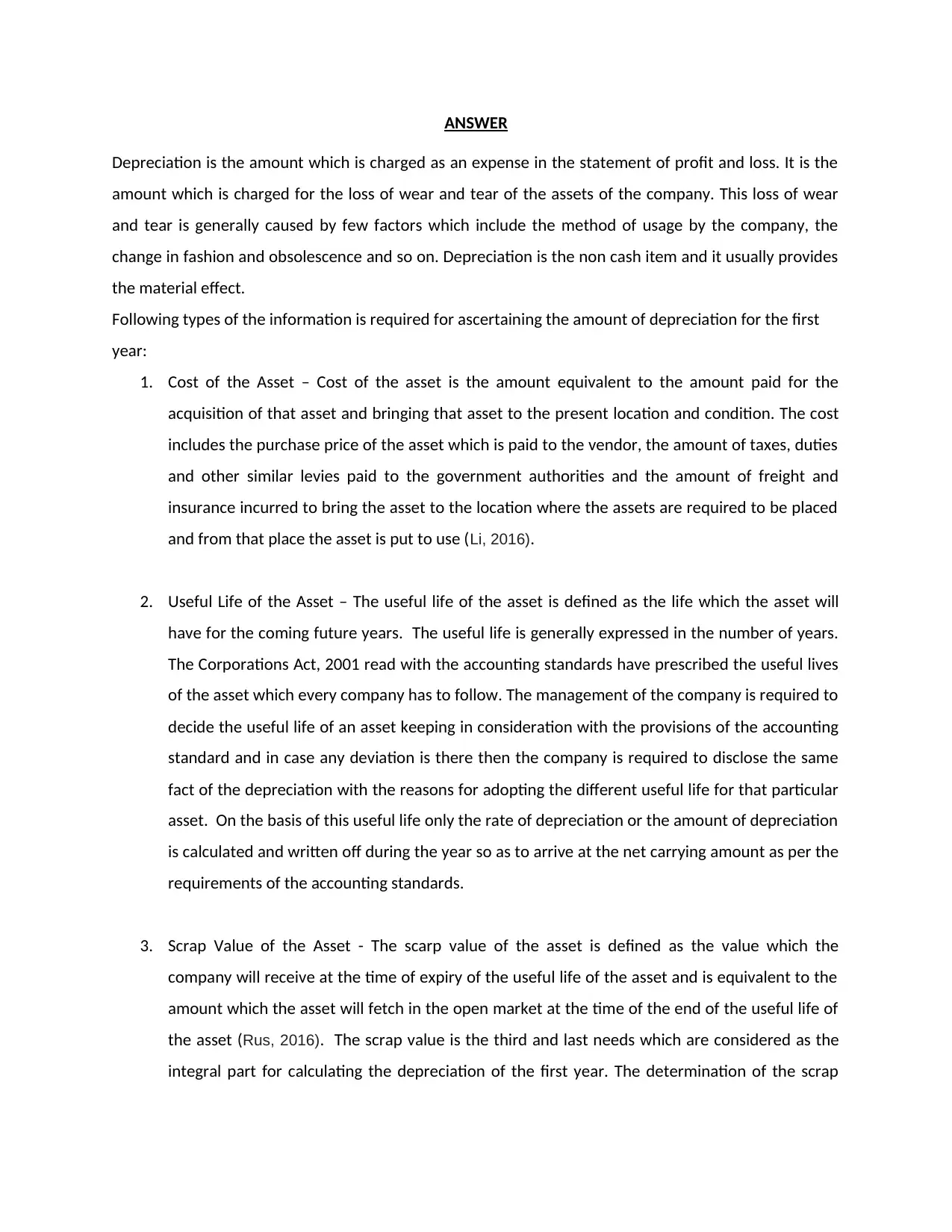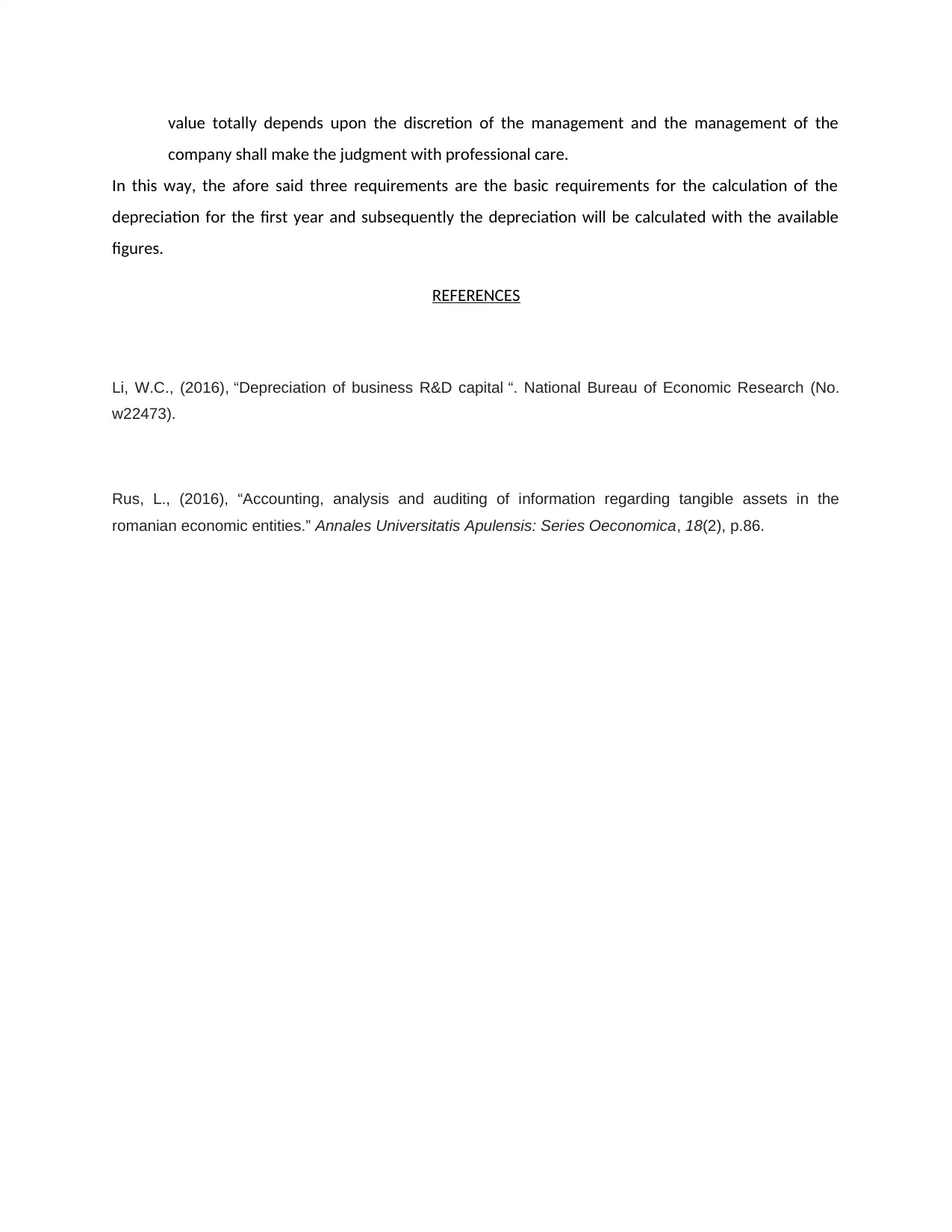Depreciation Calculation in Accounting for Asset Management
VerifiedAdded on 2020/05/11
|2
|600
|75
Homework Assignment
AI Summary
The homework assignment focuses on understanding how to calculate depreciation in accounting, particularly for the first year of an asset's use. It describes depreciation as a non-cash expense representing wear and tear due to usage, fashion changes, and obsolescence. The solution outlines three critical factors needed to ascertain first-year depreciation: cost of the asset (including purchase price, taxes, duties, freight, and insurance), useful life (determined per accounting standards or company management with proper disclosure if deviating), and scrap value (expected market value at the end of its useful life). These elements are integral in calculating the annual depreciation amount that affects the net carrying value of an asset. This comprehensive analysis aims to equip students with the knowledge required for accurate financial reporting as per accounting principles.
1 out of 2








![[object Object]](/_next/static/media/star-bottom.7253800d.svg)